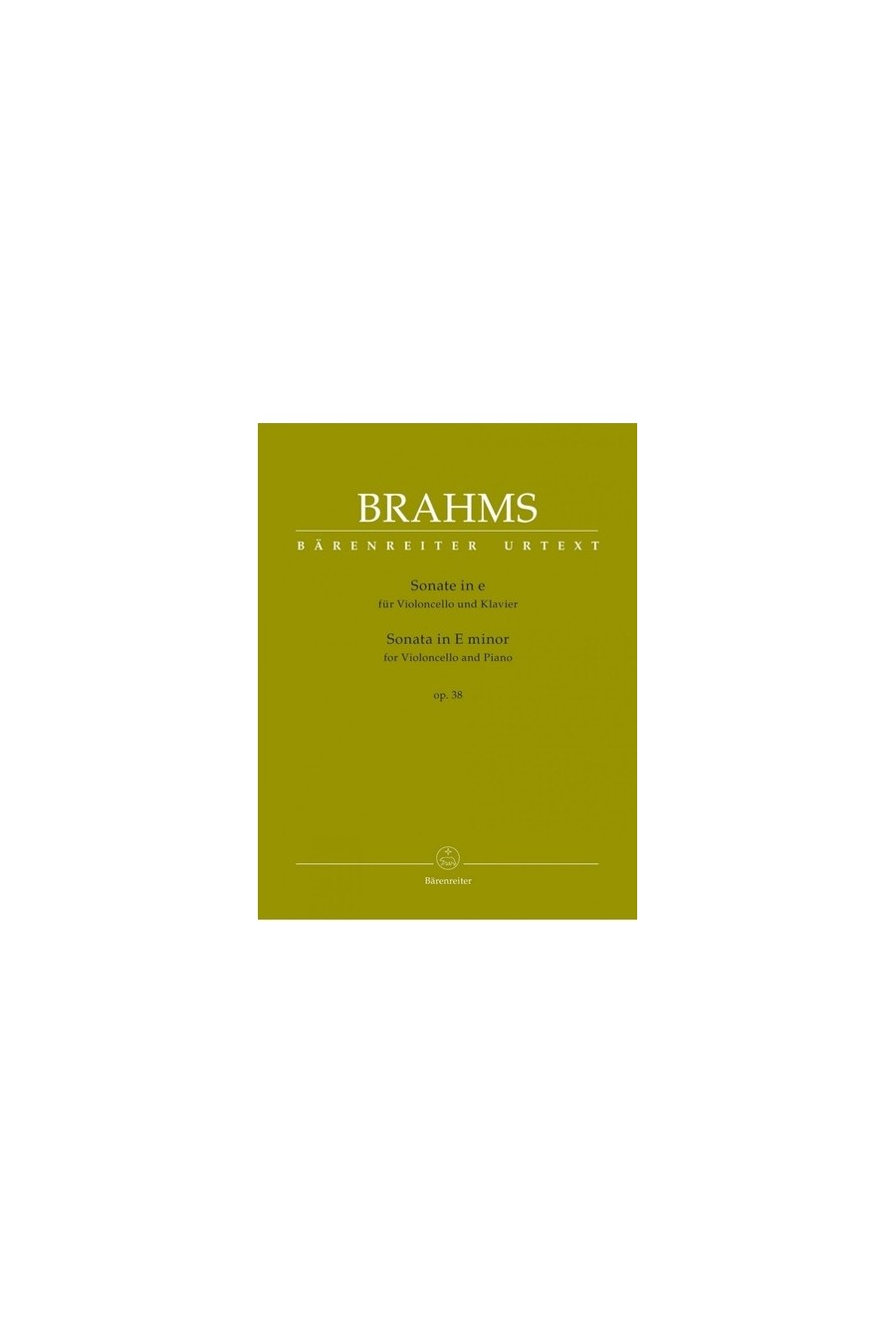

Brahms , Sonatas In E Minor Op 38 Cello/Piano (Barenreiter)
Sonatas in E Minor Op 38 Cello/Piano by Johannes Brahms (Barenreiter) The first three movements of Johannes Brahms’ E minor Cello Sonata were composed in 1862, the last movement was written in 1865. During the first years of its performance the work was received with mixed enthusiasm. By the end of Brahms’ life, however, it was widely performed and by the first decades of the 20th century it was firmly embedded in the repertoire of many distinguished cellists. It was notably Robert Hausmann’s advocacy of the work which seems to have contributed greatly to its promotion. Of particular value to the editors were the three early performance editions of the Cello Sonata op. 38 by Cornelius van Vliet and Edwin Hughes, Hugo Becker and Carl Friedberg, as well as Julius Klengel. The cellists’ van Vliet, Becker and Klengel’s fingering and bowing allows for a better understanding of their performance practice. As such, the Bärenreiter edition comes with a cello part marked with fingering and bowing by the editors which are based on the practices of Brahms‘ contemporaries. We also provide an unmarked urtext part. An important part of this edition is the Preface. Firstly it informs about the work's origin, early performances, its publication history as well as early reception. Truly remarkable is the unique detailed Performance Practice Commentary. Here the editors start from the premise that already a few decades after Brahms' death, a widening gulf developed between the composer's expectations and the performance practices of the early 20th century. On the basis of manifold sources which include memoirs by pupils and chamber music partners, treatises and essays, early instructive editions and historical recordings, the editors deal with key issues in understanding Brahms' notation. By a section-by-section analysis of rhythm and timing, dynamics and accentuation, dots and strokes, slurring and non legato, piano pedalling and overholding, piano arpeggiation and dislocation, string instrument fingering, string instrument harmonics and vibrato, the editors provide an indispensable assistance for a historically informed interpretation of the work. At the same time, the edition offers an exciting and often surprising insight into musical interpretation of the German Romantic Era in general. - A pioneering Urtext edition - With an unmarked Urtext part - With a second part including fingering and bowing based on the practices of contemporaries of Brahms - With an extensive Performance Practice Commentary - For further information on Romantic performance practice we recommend the text booklet: “Performance Practices in Johannes Brahms' Chamber Music”, BA 9600
Brahms, Sonata in E minor for Cello and Piano (Henle)
Brahms, Waltz Op. 39 No. 15 for Cello and Piano (EMB)
Brahms, Sonata in F major for Cello and Piano (Henle)